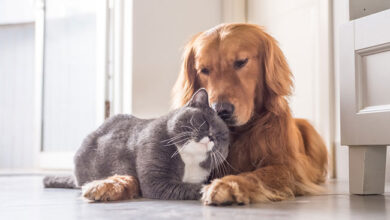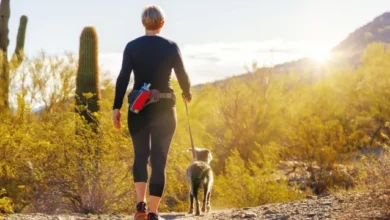
As the holiday season approaches, temperature drops and snow starts to set in. Seasonal changes in weather call for some adjustments to your pet’s daily routine and safety. You need to keep them safe and protected so that they stay healthy all through the season Caring for your pets is a prolonged effort that does require a little effort from your part. This month we will tackle some safety tips that should keep your furry friends out of trouble. As you know, the holiday season should be a time of joy and happiness; it’s not the time to pay a visit to the emergency ward or clinic.
Safety Tips and Care for Pets
1. Take proper Care of the Paws
The paws of dogs and cats are susceptible to picking up germs and bacteria. There is little you can do about the frostbites on the tails, ears and legs of pets, but reducing the length and number of pet walk in the open cold can be beneficial. For dogs, consider buying them a pair of dog boots. The boots will serve as an extra layer of protection against the harsh winter cold and prevent them from picking up germs. For stubborn dogs that refuse to wear booties, cleaning out the paws with a dry towel after every walk will do just fine.
2. Secure all decorations
Animals and pets are a curious creature, they can attempt to chew or eat whatever you put out. Cats, in particular, are drawn to sparkly and shiny things like light décor items. Ornaments are of particular danger because they are made from glass or ceramic. Once, it is chewed or cracked by pets the broken pellets can charm them.
Secure the Christmas tree to the wall or fasten it to the ceiling as the case may be to prevent it from tipping over while you are away. If you can’t do that, look for a way to place a fence around the tree to separate the pets from it.
3. Adjust daily diets for changes in calories
The daily diet of your pets is one of the best means which you can control to care for your pets. Most meal plans for pets are specially calibrated to offer all the vitamins, minerals and calories they need. However, during the winter season, a lot can change in the metabolic activity of your pets. You have to make the right changes in diet so that you can accommodate the changes in their metabolic activity. Some pets love the snow and will go out numerous times of the day to play. This increase in activity has to be balanced with the right means to supply all the energy required for the increase in daily exercise routines.
4. Create a safe place for pets when receiving visitors
You should create a safe place for pets when you receive visitors into the house. Just like humans, some pets love it when visitors come around the home while others can feel overwhelmed with stress. If you notice that your pets get anxious while receiving visitors then you will have to create a safe place where they can stay to cope with the stress. Do regular routine checks on them to allow them feel comfortable that you are close and near them. The benefits of a current ID tag for your pets can’t be overemphasized here. In cases where they run out of the house in fear of new faces, the tag can be used to trace the owner.
5. Not all human foods are good for pets
This will be a shocker to some pet owners – not all food humans consume are ideal for pet consumption. Chocolates, in particular, are a no-no for pets. Keep all chocolates and gifts that could be chocolates out of the reach of pets. Even if they are wrapped in a box, they are still not ideal to have to lie around the house.
Sweets containing Xylitol and many low-calorie and sugar-free gums that contain natural and artificial sweeteners are harmful to pets. Xylitol, in particular, is harmful to dogs because it can cause metabolic complications and liver failure.
6. Increase the intervals between baths
Increasing the interval between baths is a surefire strategy of caring and keeping your pets safe. You will agree that moisturizers are your best friend during the winter season, but the same can’t be said of your furry friends. Bathing the pets regularly will dry out their skin just as it dries out the skin of humans. The best thing to do is to increase the time interval between baths during the winter season. Speak with your vet if there is a special shampoo to use to offer some moisturizing to the pets after every bath.
7. Regulate heat sources in the house
As expected from pets, during winter, they tend to seek out heat sources as a means of coping with the drastic low temperatures. Experts advise that these heat sources are a potential area of heat burn in pets and post a great risk for their safety and health. It’s your duty as a pet owner to control the proximity of these heat sources to your pets to avoid accidents. There have been cases well cats curl up a radiator or jump into a wood-burning stove in an effort to stay warm. It’s imperative that owners should make these places inaccessible to pets during the winter months



